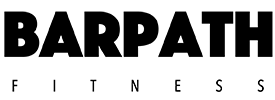Core training is more than just training “abs” and it’s unfortunately not demonstrated effectively on social media most of the time. Contrary to what influencers will tell you, you don’t need 6 days per week of ab training with hundreds of reps. We need to train the core like any other muscle group; hitting the musculature effectively and with some sort of progressive overload.
Core Musculature
The core is made up of more than just the muscles responsible for crunching (flexion) movements.
Rectus Abdominis
These are your “6 pack” muscles. These muscles support the muscles of the trunk and moves the body between rib cage and pelvis. This muscle is primarily responsible for flexion of the spine.
Transverse Abdominis
The transverse abdominals are deep muscles in the core musculature that stabilize the trunk. The wrap around the trunk and the fibers run horizontally.
Internal and External Obliques
Obliques are responsible for flexing, laterally bending, and rotating the spine.
The external obliques allow the trunk to twist, but to opposite side of motion, so right external obliques help twist to the left and vice versa. The internal obliques flex and bends the trunk as well and they work in opposite function of external obliques (same side rotation).
Both of these contribute to spinal stability.
Erector Spinae Group
The erector spinae is actually a group of muscles divided into three parts. These muscles help straighten the back and allow for side to side function rotation. They extend, rotate, and flex. Most people think of back extensions when they think of this muscle group.
The pelvic floor and diaphragm are also involved with core training and should be considered when training the core.
Benefits of core training
A strong core leads to better balance and stability as well as reduced risk of injury.
You may occasionally hear people suggest that you don’t need direct core work if you are squatting and deadlifting heavy consistently. While it is true that you are working your core stabilizer muscle as you are doing these movements, you won’t be maximizing your core strength if you aren’t throwing in some direct core work as well. While compound movements are extremely beneficial for a strong core and they do strengthen your core substantially over time, you are most likely not going to hit every part of the core musculature by just relying on these movements. So, it is important to add direct core work to your training.
Common Core Training Mistakes
One of the most common mistakes regarding core training is that people default to super high reps, sometimes up in the 30, 50, or even 100 rep range. It is important to treat your core training like every other muscle group. You want to make sure you are incorporating some sort of progressive overload and not just doing 50 reps of ab movements thrown in sporadically here and there. When it comes to the core, think function over aesthetics; as only training spinal flexion is missing out on a ton of core musculature you could be strengthening!
How to Strengthen Your Core Correctly
Incorporate progressive overload. Make sure you are progressing these core movements somehow just like you would with any other muscle group. You probably don’t need to do a one rep max of any core movement, but work in higher and lower rep ranges that are progressed in your programming.
Include exercises for all of the musculature mentioned above and focus on hitting all of the prime movements as well as anti-rotation for a strong core.
Breathing & Bracing
This takes us into the topic of breathing. The diaphragm is included in the core musculature and breathing is probably the most important part of lifting; especially with heavier loads.
When we think about “bracing our core” for a lift – the breathing portion has to come with it. If you are chest breathing (which is a more shallow breath), you’ll typically have a harder time bracing your core while breathing through movement (if needed).
There are also some movements where you actually use breathing and bracing combined. With most larger, compound movements (overhead press, squat, deadlift) you’re going to most likely practice some form of holding your breath during the lift to increase intra-abdominal pressure.
Think of this as a soda can. If the soda can is sitting on the floor and it’s empty, you can step on it and smash it. If the soda can on the floor is full and unopened, you can literally stand on it without busting it. This is due to the internal pressure. That’s what breathing correctly can do for your spine and core when you’re lifting.
When bracing, be sure not to push down and out too hard. Breathing is natural. Yes, the purpose of a weight belt is to breathe into the belt and use it to increase IA pressure, but we don’t want to be excessively “bearing down” when we brace. It can be a more subtle but solid movement and it should all come naturally over time.
Core training exercises
Hanging knee raises
Target Muscle Group: Rectus Abdominis
As you lift the knees up, think about flexing the lumbar spine specifically so you are posteriorly tilting the pelvis. This will allow you to actually flex the abs rather than only stabilize them. Without proper pelvic position, this exercise will mostly result in flexing and extending the hip flexors versus the abdominals.
Plank
Target Muscle Group: Transverse Abdominis
When performing a plank, make sure you are posteriorly tilting the pelvis so you are getting maximal tension in the abdominals while minimizing the tension from the hip flexors.
Cable Woodchop
Target Muscle Group; Obliques
Start with the pulley set on the highest rig. Set up to where your hips and shoulders are squared. Keep the arms straight in front of you. Grab the handle with both hands and pull it towards the opposite hip. Don’t twist the body too much, but you can slightly pivot the back foot as you get towards the end range of the movement.
Back Extension
Target Muscle Group: Erector Spinae
You can perform these on a back extension machine at the gym. Your feet are set up in the bottom platform and the quads are resting in the pads. Flex the spine downward to the floor and then extend the spine as you come back up. No need to hyperextend; just extend enough to create tension in those erector muscles.
Pallof Press
Target Muscles: Obliques · Transverse Abdominals · Scapular Stabilizers · Gluteals · Rectus Abdominis
With anti rotation, you’re loading a rotational movement then resisting the rotation.Anti-rotation movements build a ton of stability and strength in the core. These exercises are basically training you to handle torque so if you get bumped or fall or twist your spine a certain way, you have strong enough musculature to handle that.
For this movement, you’ll use either a cable pulley or a band anchored to one side of your body. You’ll then press the band or cable forward and resist rotating as the band or cable tries to pull you into rotation.
Learn More about Core Training
If you want to learn more about core training, check out our Stronger Than Your Boyfriend podcast, episode 24: Are You Going About Core Training All Wrong?



